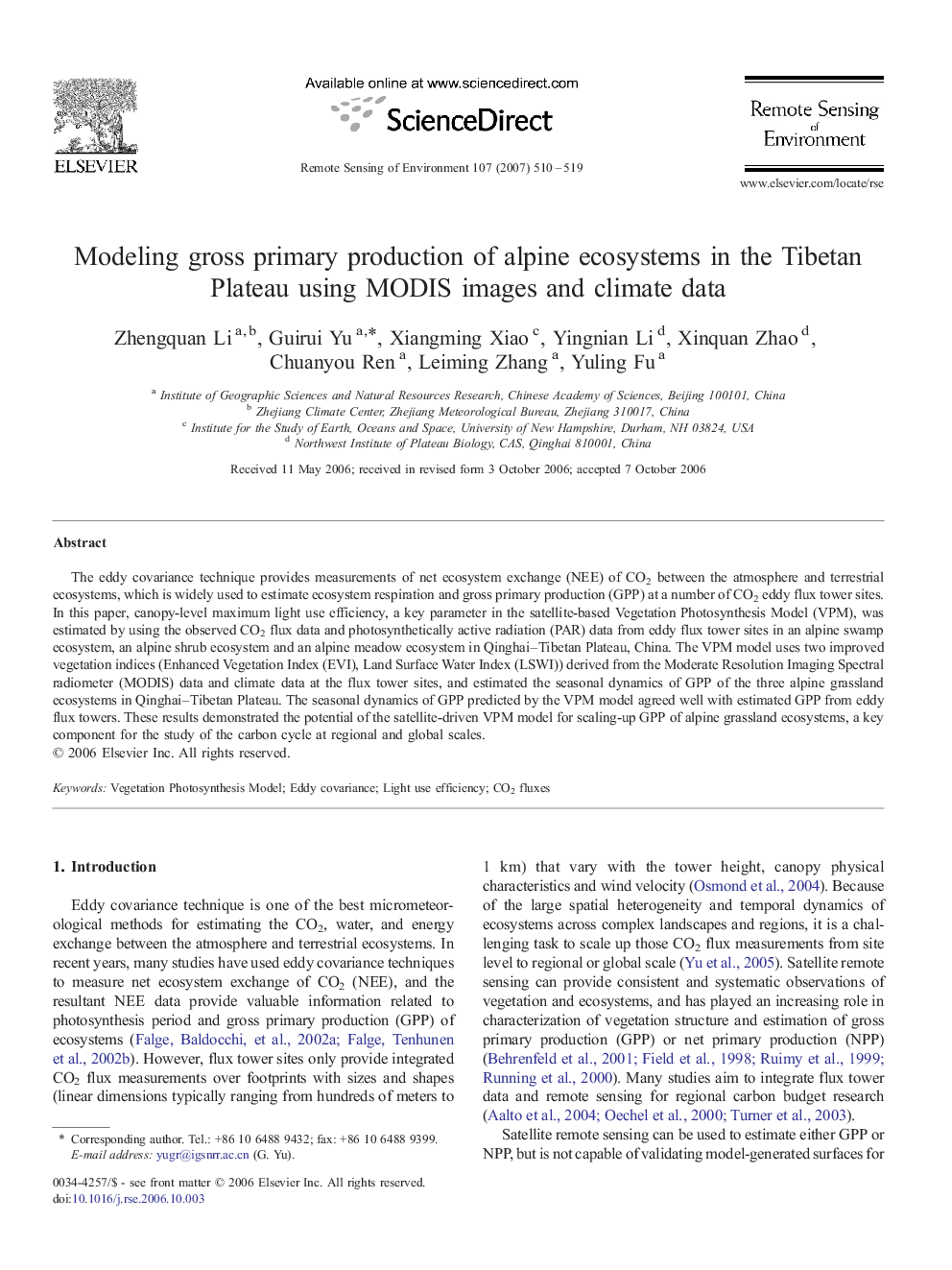| کد مقاله | کد نشریه | سال انتشار | مقاله انگلیسی | نسخه تمام متن |
|---|---|---|---|---|
| 4460844 | 1621350 | 2007 | 10 صفحه PDF | دانلود رایگان |

The eddy covariance technique provides measurements of net ecosystem exchange (NEE) of CO2 between the atmosphere and terrestrial ecosystems, which is widely used to estimate ecosystem respiration and gross primary production (GPP) at a number of CO2 eddy flux tower sites. In this paper, canopy-level maximum light use efficiency, a key parameter in the satellite-based Vegetation Photosynthesis Model (VPM), was estimated by using the observed CO2 flux data and photosynthetically active radiation (PAR) data from eddy flux tower sites in an alpine swamp ecosystem, an alpine shrub ecosystem and an alpine meadow ecosystem in Qinghai–Tibetan Plateau, China. The VPM model uses two improved vegetation indices (Enhanced Vegetation Index (EVI), Land Surface Water Index (LSWI)) derived from the Moderate Resolution Imaging Spectral radiometer (MODIS) data and climate data at the flux tower sites, and estimated the seasonal dynamics of GPP of the three alpine grassland ecosystems in Qinghai–Tibetan Plateau. The seasonal dynamics of GPP predicted by the VPM model agreed well with estimated GPP from eddy flux towers. These results demonstrated the potential of the satellite-driven VPM model for scaling-up GPP of alpine grassland ecosystems, a key component for the study of the carbon cycle at regional and global scales.
Journal: Remote Sensing of Environment - Volume 107, Issue 3, 12 April 2007, Pages 510–519